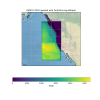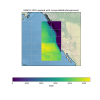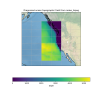Hi everyone
I’m looking for any test-case, or simple experiment, to take the first steps on MOM6-regional modelling.
What I’ve done so far is (thanks to some of the “CESM 2020 MOM6 Webinar Series” presentations, especially the Kate Hedstrom’s).
Since last year we’ve been performing some global MOM6+SIS2 experiments with different horizontal grids. We are also switching MOM5+SIS to MOM6+SIS2 in our most recent coupled Atmosphere-Land-Ocean-SeaIce model. Initial tests have shown promising results.
But a regional approach of MOM6 I've never tried so far.
Thank you, Emanuel
I’m looking for any test-case, or simple experiment, to take the first steps on MOM6-regional modelling.
What I’ve done so far is (thanks to some of the “CESM 2020 MOM6 Webinar Series” presentations, especially the Kate Hedstrom’s).
- I generated a regional MOM6 grid with the “make_grid.py” script obtained from pyroms/make_grid.py at python3 · ESMG/pyroms (still don’t know how to set the topography (topog.nc) file, maybe it could be made via FREnctools?)
- I set the OBC and IC conditions, based on one of our recent global MOM6+SIS2 climatic simulations, using the guidelines expressed in CCS1_OBC_from_global_MOM6.ipynb notebook from https://github.com/ESMG/regionalMOM6_notebooks/blob/master/creating_obc_input_files/CCS1_OBC_from_global_MOM6.ipynb
- I learned about the OBC options in the following notebook: Open Boundary Conditions · NOAA-GFDL/MOM6-examples Wiki
Since last year we’ve been performing some global MOM6+SIS2 experiments with different horizontal grids. We are also switching MOM5+SIS to MOM6+SIS2 in our most recent coupled Atmosphere-Land-Ocean-SeaIce model. Initial tests have shown promising results.
But a regional approach of MOM6 I've never tried so far.
Thank you, Emanuel




